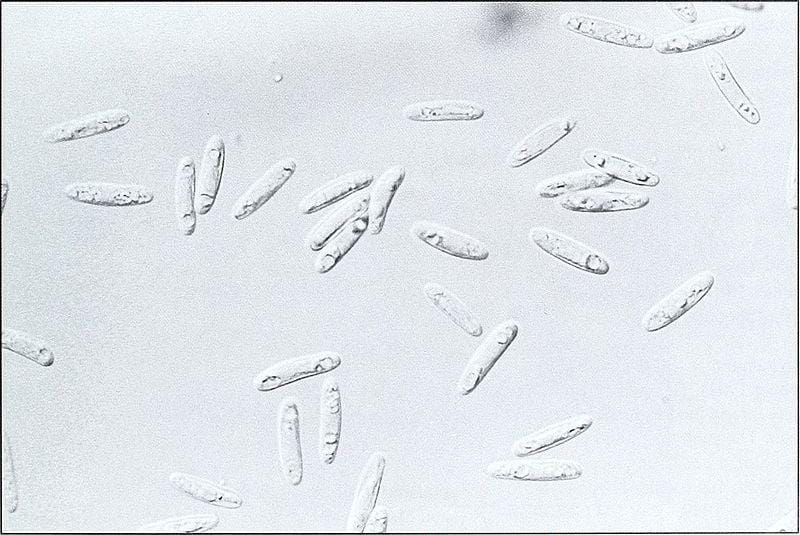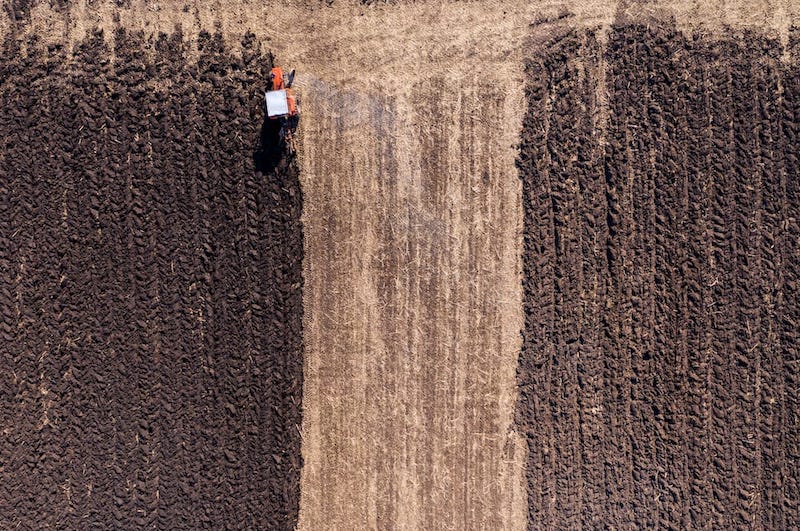Pasture diseases can lead to a reduced amount of dry matter production. Disease can affect the feed quality, seed production and can be very harmful to the animals that consume them.
Science has pointed out some effective measures for controlling pathogens.
In today’s article, we’ll be discussing a hero and a villain. Our lead character is perennial ryegrass, and the villain that threatens its survival is none other than blind seed disease. So let’s discuss all the ways in which we can take this evil villain down!
Let’s talk about blind seed disease:
The fungus, Gloeotinia temulenta causes blind seed disease. This fungus infects only the seed. If this infection occurs, the seeds get affected so badly that they are unable to germinate. Some farmers called these seeds ‘blind seeds’, and that’s how the name was formed.
Over 40 species of grass are susceptible to blind seed disease, the most common being annual ryegrass, perennial ryegrass and tall fescue.
In Spring, the fungus sprouts as stalked, cup-shaped creatures called apothecia. Primary spores, called ascospores are ejected into the air from the apothecia, but only those that land on flowers of a grass host will cause infection. Conidia are spread to otherwise healthy flowers when there’s rain splashing.
How to spot a blind seed:
Blind seeds will be shrunken and either rust or pink coloured. Tests for blind seeds can be done by soaking the infected seeds in water to dislodge the conidia. Labs conduct tests for concentration by centrifugation or by examining a batch of seeds under the microscope.

The life cycle of the fungus:
First, the infected seeds reach the soil either by shattering, planting diseased seeds, feeding the infected seeds, by harvesting operations or by natural seed dispersal.
The blind seeds are dormant during winter either on the surface of the soil or near it.
In Spring, Apothecia, or cup-shaped spore-producing organs sprout from the blind seeds and discharge the Ascospores, or primary spores, by force.
The spores get scattered throughout the ryegrass flowers and infect the developing seeds.
Conidia or secondary seeds sprout on the infected seeds. They look like slimy growths.
Sometimes, either rain or insects can spread the seeds from head to head.
Once the infection starts, it can spread like wildfire and end up killing many ryegrass seeds.
The infected seeds, if overwintered on or near the surface of the soil, can produce spore cups during Spring and the cycle is repeated all over again.

Blind seed disease only affects the seeds and not any other part of the plant. There is actually no specific treatment for blind seed disease.
The only solution would be to remove all seeds from harvested ad un-harvested areas every year and make sure that no infected seed is removed. If done right, the blind seed disease could be totally eliminated in a couple of years.
Why blind seed disease is tough to control:
Perennial ryegrass seeds shatter far and wide. In fact, most of the diseased seed is lost either before or during harvesting options. Burning has said to cause a little improvement in the shattering problem.
Since combine harvesting is practised in ryegrass seed harvesting, a lot of light seed ends up being spread on the field. Light-weight seeds are easy targets for blind seed disease.
In the first two years, blind seed disease may not even be detected because the germination rates will still be good. The disease only gradually starts to increase until it suddenly causes major losses.
Sometimes, ryegrass is cut for hay instead of seed. This is by no means a solution for badly infested fields. Cutting infested fields for hay allows spores to be blown to neighbouring fields and it has been known that blind seeds on upland soils could produce spores the second spring after harvest.
Instead, this disease can be tackled much more effectively if the crop was cut before the seed was formed.
Infected seeds also have to be disposed of properly. Diseased seeds just carelessly dumped could end up being used for feed, or could end up causing a serious infection on the seed fields.
Factors that encourage blind seed disease:
Blind seed disease is usually caused by certain environmental conditions. If there are long periods of leaf wetness in late November or early December, and if the air temperatures are between 15-25 degree Celsius, blind seed disease is more likely to happen.
Cool wet weather in May and June also favour the disease by encouraging the growth of spore cups and by extending the flowering period of the grass. Poorly drained soils that retain moisture are also a breeding ground for the disease.
High rainfall in fall and spring also indirectly favour the disease, by preventing the elimination of infested fields that technically should be ploughed before May 15.
What we can do to make sure blind seed disease doesn’t see the light of day in our fields!
- Only use approved, disease-free seeds that can be easily detected in seed samples
- Plant seeds that are 24 months old: The fungus that causes blind seed disease dies inside infected seeds after 24 months of dry storage. Do not use diseased seeds that are less than 2 years old for any purpose whatsoever.
- Plant seeds that are half-inch deep: Planting seeds more than half an inch deep with complete soil coverage actually prevents the sprouting of fungus spore cups from the seed.
- A good seedbed: Preparing a good seedbed before seeding will allow the seed drill to permeate the right depths and enable good seed coverage.
- Plough infested fields: Plowing should be done to prevent the growth of spore cups, discharge of spores and its travel to nearby fields. Thorough examinations of samples of perennial ryegrass will help you identify blind seed disease.
- Don’t attempt to clean diseased seeds when harvesting. Any diseased seed returned to the field puts your entire pasture at a huge risk.
- Burning of stubble and straw is a good temporary remedy for badly infested fields.
- Ryegrass screenings: Destroy ryegrass screenings. These screenings contain lightweight seeds that are the most likely to be diseased.

Now, let’s discuss the best and most beneficial farming practices that you can follow to keep your pastures clean and disease-free:
- Bury blind seeds below the furrow slice by clean ploughing
- Do not grow buckwheat or darnel along with perennial ryegrass. The large seeds of buckwheat will produce more spore cups than perennial ryegrass seeds.
- Good soil drainage will reduce the disease. This is because spore cups grow better in wet soils.
- Plough all ryegrass at the same time so that the disease isn’t carried over by the crops.
- Taking two seed crops and ploughing under the stand is a successful practice that growers follow.
- If you remove the straw after harvest, it allows the soil to dry more quickly. Dry soils will help stop the growth of the fungus.
Blind seed disease is scary but as discussed above, there are measures we can take to make sure we don’t see this uninvited guest on our pastures!
The team at Pasture.io is always around, to help you put your pasture growth measurements on auto-pilot. If this is what you want, schedule a free 10-minute call with one of our experts.
Until we meet again, Happy Farming!
- The Dedicated Team of Pasture.io, 2020-09-18